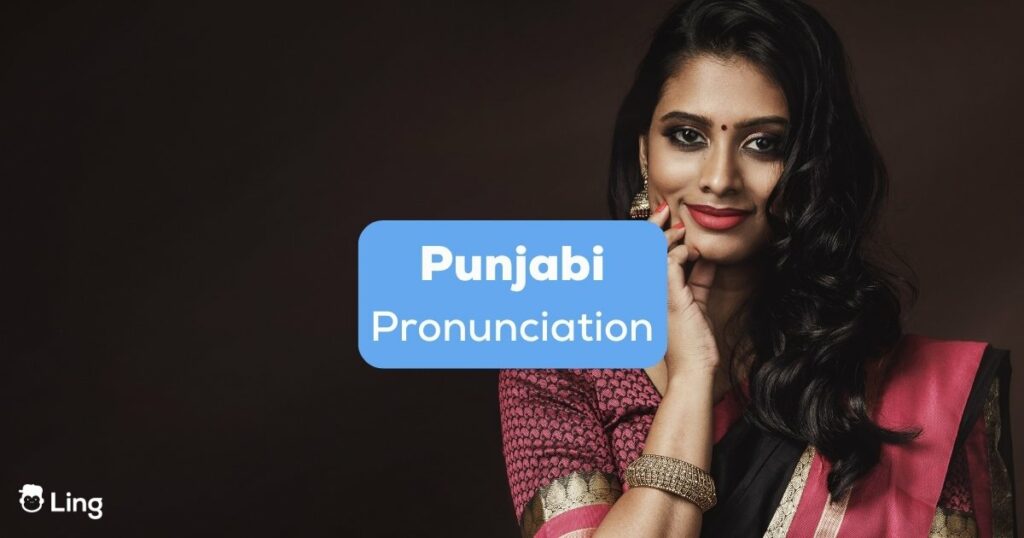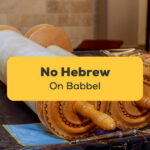Look, we know that Punjabi can be a bit of a challenge for non-native speakers. Those vowels and consonants can be tricky to get your mouth around. So, if you’re serious about improving your Punjabi pronunciation, you’re in the right place.
In this guide, we’re going to break down everything you need to know about Punjabi pronunciation. We’ll cover the vowels, consonants, tones, and even the most common mistakes non-native speakers make.
But we’re not just going to talk about it; we’ll give you some vocabulary to help you nail that pronunciation like a boss. Let’s get to it!
The Vowels In Punjabi Pronunciation
Punjabi vowels are pretty important to get right if you want to speak the language properly.
There are ten vowel sounds in Punjabi, which are divided into two categories: short and long.
The short ones are “a,” “i,” “u,” “e,” and “o,” while the long ones are “aa,” “ee,” “oo,” “ei,” and “au.”
Each of these sounds is unique and requires a different mouth and tongue placement.
To make the right sounds, you have to position your mouth and tongue in the right way. Here are some tips to help you out:
Short “a” sound: Open your mouth wide and keep your tongue relaxed at the bottom of your mouth with slightly parted lips.
- Example: khatta (sour)
Short “i” sound: Put your tongue against the roof of your mouth and pull it back slightly, with relaxed and slightly open lips.
- Example: kitta (done)
Short “u” sound: Round your lips and bring them forward while pushing your tongue slightly forward in your mouth.
- Example: putt (son)
Short “e” sound: Keep your tongue in the same position as the short “i” sound, but with slightly more open lips.
- Example: tena (his/her)
Short “o” sound: Open your mouth wide and round your lips.
- Example: chota (small)
Long “aa” sound: Open your mouth wide and push your tongue down and back towards your throat.
- Example: kaala (black)
Long “ee” sound: Put your tongue against the roof of your mouth and pull it back further than for the short “i” sound, with relaxed and slightly open lips.
- Example: leela (play)
Long “oo” sound: Round your lips and bring them forward while pushing your tongue slightly forward in your mouth.
- Example: sooja (straight)
Long “ei” sound: Open your mouth wide and pull your tongue back slightly while also lifting the back of your tongue towards the roof of your mouth.
- Example: meina (I)
Long “au” sound: Round your lips and bring them forward while pushing your tongue slightly back and down in your mouth.
- Example: laung (cloves)
Tips For Pronouncing Punjabi Vowels
To really nail these Punjabi vowel sounds, it’s essential to practice them consistently. Here are some exercises that can help:
- Mouth and tongue placement exercises: Stand in front of a mirror and practice making each vowel sound. This will help you see how your mouth and tongue are moving and make any necessary adjustments.
- Exaggerate the sounds: Try exaggerating each sound to get a better feel for them. For example, make the short “a” sound as open and relaxed as possible or the long “ee” sound as stretched out as you can.
- Use them in daily speech: The best way to improve your Punjabi accent is to practice speaking as much as possible. Try incorporating Punjabi vowel sounds into your everyday life, even if it’s just a word or two.

The Consonants In Punjabi Pronunciation
Let’s talk about Punjabi consonants and how to master their proper pronunciation. Punjabi has 25 consonant sounds divided into three categories: unvoiced, voiced, and aspirated.
Unvoiced Consonants
Unvoiced consonants, regarding their phonetic spelling, are pronounced without the vibration of the vocal cords. Here’s a more detailed definition and explanation for them:
“k”: This is made by closing the back of your tongue against the soft palate at the back of your mouth. It’s like making the “c” sound in “cat,” but further back in your mouth.
- Example: kudi (girl)
“kh”: This sound is similar to the “k” sound but with a stronger push of air. Your tongue should be further back in your mouth, and your throat should be open.
- Example: khushi (happiness)
“ch”: This sound is made by pressing your tongue against the top of your mouth and releasing it quickly. It’s like making the “t” sound in “top” but further forward in your mouth.
- Example: chidiya (bird)
“chh”: This sound is similar to the “ch” sound but with a stronger push of air.
- Example: chhaj (roof)
Voiced Consonants
On the other hand, voiced consonants are pronounced with the vibration of the vocal cords. The voiced consonants in Punjabi are:
“g”: This sound is made by closing the back of your tongue on the soft palate and vibrating your vocal cords. It’s like making the “g” sound in “go,” but further back in your mouth.
- Example: ghar (house)
“gh”: This sound is similar to the “g” sound but with a stronger push of air.
- Example: ghadi (clock)
“j”: This sound is made by placing your tongue against the ceiling of your mouth and vibrating your vocal cords. It’s like making the “j” sound in “jump,” but further forward in your mouth.
- Example: jaan (life)
“jh”: This sound is similar to the “j” sound but with a stronger push of air.
- Example: jhootha (fake)
Aspirated Consonants
Aspirated consonants are pronounced with a stronger exhalation of breath. Below is a more detailed explanation of aspirated consonants in the Punjabi language:
“p”: This sound is made by closing your lips and releasing them quickly. It’s like making the “p” sound in “pot,” but with a stronger puff of air.
Example: pani (water)
“ph”: This sound is similar to the “p” sound but with a stronger puff of air.
Example: phul (flower)
“t”: This sound is made by placing your tongue against the top of your mouth and releasing it quickly. It’s like making the “t” sound in “top,” but with a stronger puff of air.
Example: tatti (hot)
“th”: This sound is similar to the “t” sound but with a stronger puff of air.
Example: thana (police station)
Tips For Pronouncing Punjabi Consonants
To master Punjabi consonant sounds, it’s important to practice consistently. Here are some exercises that can help:
Breath control exercises: Try breathing in deeply and slowly, then exhaling with force as you make each consonant sound. This will help you develop the strength and control needed to make the sounds correctly.
Lip movement exercises: Practice moving your lips into the correct position for each consonant sound. For example, for the “p” sound, your lips should be together and quickly released.
Tongue placement exercises: Practice placing your tongue correctly for each consonant sound. For example, for the “ch” sound, your tongue should be pressed against the roof of your mouth and released quickly.
It’s also helpful to listen to native Punjabi speakers and mimic their pronunciations.
You can also practice speaking Punjabi words out loud and record yourself to listen back and identify areas where you need to improve.

Tones In Punjabi Pronunciation
In Punjabi pronunciation, there are three main tones: high, mid, and low. The tone of a word depends on the pitch and intonation of the speaker.
For example, if a speaker raises their pitch at the end of a word, it becomes a high tone.
If the pitch remains the same throughout the word, it becomes a mid-tone. And if the pitch drops at the end of the word, it becomes a low tone. Easy right?
Now, let’s look at some examples of Punjabi-related words with each tone:
High tone: (baal – hair), (paani – water), (kaagaz – paper)
Mid-tone: (tera – your), (Punjabi – Punjabi), (larka – boy)
Low tone: (ghar – house), (farsha – carpet), (taqriban – approximately)
Tips For Pronouncing Punjabi Tones
The key is to listen carefully and practice regularly. Pay attention to the pitch and intonation of native Punjabi speakers, and try to imitate them.
It’s also helpful to practice with a language partner or tutor who can give you feedback and help you improve.
Another tip is to use tone marks when reading Punjabi script. Tone marks are small symbols that indicate the tone of each syllable.
By using tone marks, you can train your ear to recognize different tones more easily.
Common Punjabi Pronunciation Mistakes
If you’re an English speaker trying to pronounce Punjabi words, there are a few common mistakes that you might make.
For starters, aspirated consonants like “p” and “t” can be tricky since they involve a little puff of air.
And those retroflex consonants like “ch” and “j”? Yeah, they’re pronounced with the tongue curled back, so that takes some practice.
Don’t forget about those nasal consonants like “n” and “m,” which are pronounced with your nose.
And last but not least, vowel sounds can be tricky, too, since they can change depending on the word. But, with some practice and patience, you’ll soon get the hang of it!
Useful Practice Punjabi Vocabulary
I’ve compiled a list of useful Punjabi words that can help you practice your pronunciation. These words have unique sounds that will help you get a feel for the rhythm and intonation of the language.
| English | Punjabi | Pronunciation |
| Hello | ਸਤ ਸ੍ਰੀ ਅਕਾਲ (sat sri akal) | saht sree a-kahl |
| Thank you | ਧੰਨਵਾਦ (dhanvaad) | dhun-vaad |
| Goodbye | ਅਲਵਿਦਾ (alvida) | al-vee-daa |
| Water | ਪਾਣੀ (paani) | pa-nee |
| Food | ਖਾਣਾ (khaana) | khaa-naa |
| Mother | ਮਾਂ (maa) | maa |
| Father | ਪਿਤਾ (pita) | pi-taa |
| Friend | ਦੋਸਤ (dost) | dost |
| Love | ਪਿਆਰ (pyaar) | piaar |
| Yes | ਹਾਂ (haan) | haan |
I hope these Punjabi vocabulary words have helped you practice your pronunciation and better understand the Punjabi language.
Remember, the key to mastering the Punjabi language is consistent practice and dedication. Don’t be afraid to make mistakes, and keep practicing.

Learn Punjabi Pronunciation With Ling
As you can see, Punjabi pronunciation can be a little tricky for non-native speakers. With ten vowel sounds, twenty-five consonant sounds, and three tones to master, it can feel overwhelming.
But, with some practice and patience, you can nail Punjabi pronunciation like a boss. Remember to pay attention to mouth and tongue placement, exaggerate sounds, and practice regularly.
And if you’re looking for more resources to help you with your Punjabi or any other language, check out the Ling app! With this game-like app, you’ll get access to over 60 languages and tools to become proficient in the language of your choice.
Download the Ling app for Android or iPhone and start your language-learning adventure now!






























































